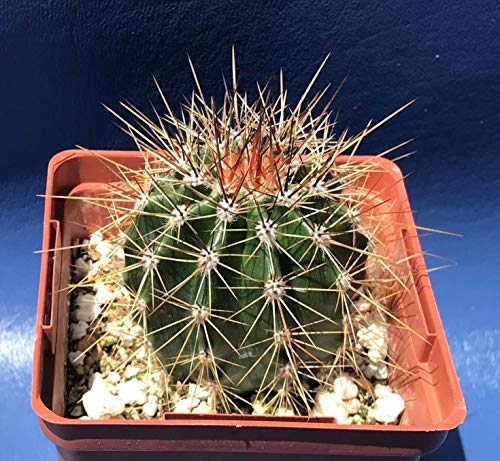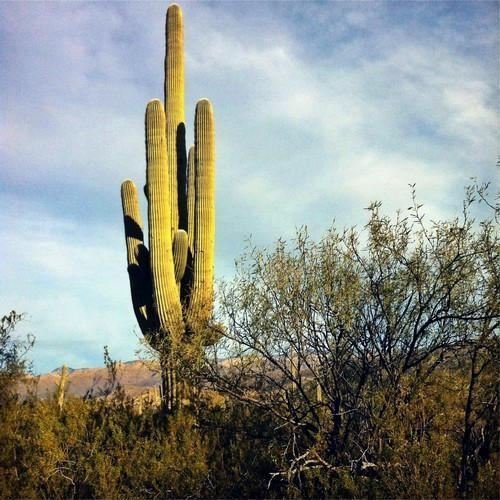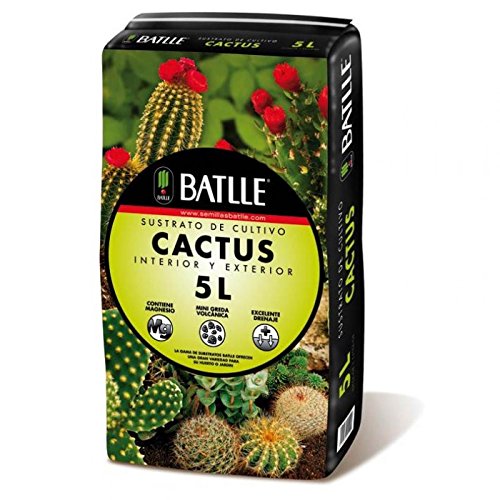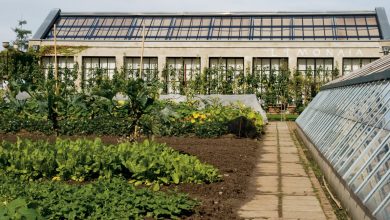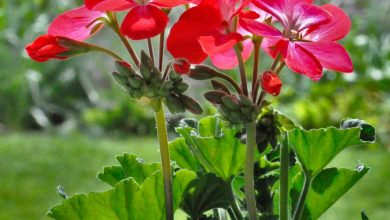Saguaro: [Characteristics, Cultivation, Care and Disadvantages]
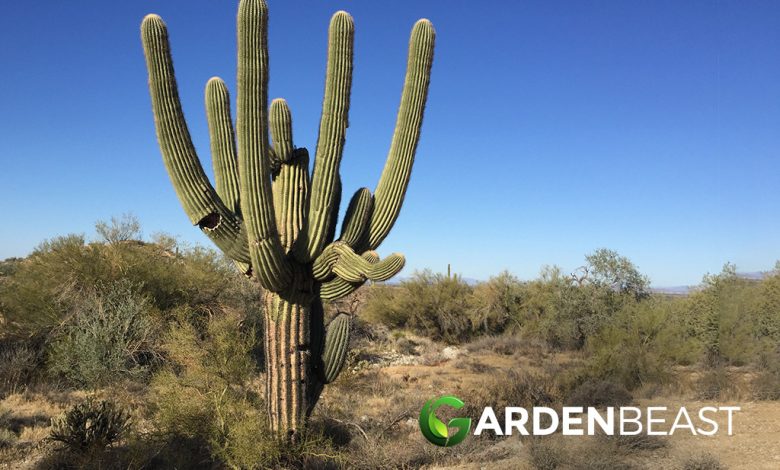
Important points when planting a Saguaro:
- When? The saguaro should be sown during the spring or summer using pollinated flower seeds.
- Where? The saguaro can be grown in sandy regions, rocky outcrops, and in deserts.
- How do we water? Irrigation must be abundant avoiding flooding.
- How often do we water? Planted in a garden or in a pot, it can be supplied with water once a month during the hottest seasons of summer. The rest of the year it is better to wait until the substrate is completely dry.
- What care does it require? The saguaro is a cactus that, as its species indicates, does not require great or specific care for its development. It adapts to all types of floors.
- What pests and diseases affect you? The saguaro plant is a species of cacti that is very sensitive to root rot or root suffocation.
What characteristics does the saguaro plant have?
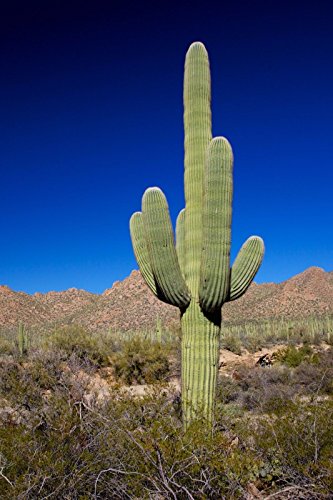 The saguaro plant is a variety of cacti, native to the desert regions of Mexico and the southwestern United States, and is the national flower of the state of Arizona.
The saguaro plant is a variety of cacti, native to the desert regions of Mexico and the southwestern United States, and is the national flower of the state of Arizona.
It received the scientific name of Carnegiea gigantea in honor of the Scottish-American philanthropist Andrew Carnegie, who financially supported research on this cactus.
It is considered the largest cactus in the world and has a network of shallow roots that extend for a radius of 30 meters.
Its stems, which take on capricious and strange shapes, are columnar, thick, fleshy and can measure up to 75 cm in diameter.
They are made up of a large number of ribs, sharp and with long spines that range from 12 to 30 and can measure between 5 and 7 centimeters. The flowers of the plant are white and open at night and remain open until the next day. Its fruit is edible.
The saguaro has a very slow growth and reaches 30 cm at fifteen years and at 50 years it reaches two meters in height. The arms of the saguaro will only be born after the plant reaches more than 75 years, a period in which it can flower and produce seeds for the first time.
The saguaro can live two hundred years with a trunk of 80 cm in diameter, a height of 15 meters and a weight of ten tons; of which 80% is water. The plant stores and accumulates up to 750 liters of water in a single rainfall, which is enough to withstand a year of drought.
Like all cacti, the saguaro carries out the process of photosynthesis at night because they can open the stomata that remain closed during the day.
Evolutionists claim that the way cacti carry out photosynthesis, involving more than 70 chemical reactions, is a miracle and the work of an intelligent Creator.
The saguaro is also known by the common names Pitahaya Cactus, Giant Saguaro, or Cactus. The trunks of the saguaro are used to build houses and its fruits, flowers and seeds for food. The pulp that is extracted from the fruit of the saguaro is used to make wine.
When to plant the saguaro?
The saguaro should be sown during the spring or summer using pollinated flower seeds. The plant is self-sterile so it needs cross-pollination with other specimens.
Pollen spread can be anemophilous (by wind) or by insects such as bees or bumblebees.
Where to plant the saguaro?
The saguaro can be grown in sandy regions, rocky outcrops, and in deserts. It has been identified that some saguaros can also grow and thrive in mountains at elevations of over 3,000 meters.
The saguaro is a plant that adapts to regions of high light intensity and a high rate of evaporation.
How do we water the saguaro?
Because it is a cactus, the saguaro is a plant that does not require frequent watering, since it can withstand up to a year without it. However, watering must be abundant avoiding waterlogging.
How often do we water the saguaro?
Experts recommend controlling irrigation very well and spacing out the water supply over time. The saguaro, with all cacti, prefers very dry soils between waterings.
Planted in a garden or in a pot, it can be supplied with water once a month during the hottest summer seasons. The rest of the year it is better to wait until the substrate is completely dry.
How to plant a saguaro step by step?
- Select the saguaro seeds, previously germinated in seedbeds.
- Select a deep, wide container or pot or an appropriate garden spot and prepare the soil for planting the saguaro.
- Fill with sand, lime or universal substrate mixed with perlite in equal parts.
- Sow the seeds with a thin layer of substrate without sinking it too much.
- Moisten the substrate with the help of a sprayer.
- Locate in a place in full sun.
What care does the saguaro need?
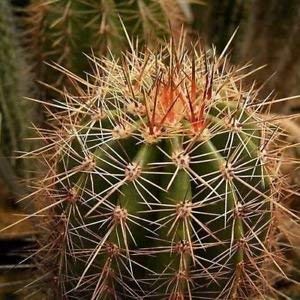 The saguaro is a cactus that, as its species indicates, does not require great or specific care for its development.
The saguaro is a cactus that, as its species indicates, does not require great or specific care for its development.
The saguaro can be grown in pots, during its early years, in any climatic zone of the world, with mild winters.
It adapts to all types of soils, but the saguaro prefers those that are sandy or sandy loam, with very light, porous textures and calcareous or limestone soils.
The location of the crop should be in a place with full sun or high light. Young saguaro specimens can be placed in semi-shade to favor their development.
The plant is rustic and is very resistant to extreme temperature conditions. The more adult the saguaro is, the more resistance it has. In the first years of life it is not recommended to place it at temperatures below 5º C because it can stop growth.
They are resistant to sunlight, and there are no problems with burns or damage to the epidermis, except during the flowering season. Requires top dressing with granular fertilizers around the main stem in early spring, then top dressing again in the summer.
The saguaro is a demanding plant in terms of potassium supply, which is an element linked to moisture conservation and cell osmoregulation.
What pests and diseases affect the saguaro?
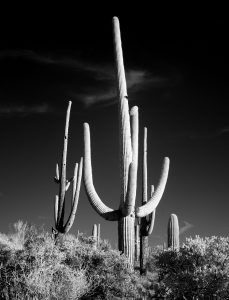 The saguaro plant is a species of cacti that is very sensitive to root rot or root suffocation.
The saguaro plant is a species of cacti that is very sensitive to root rot or root suffocation.
Root rot can be caused by excessive or abundant watering that promotes the development of the fungus in the saguaro.
With root rot, saguaro leaves wilt and turn yellow, further weakening the plant.
Once the problem is detected, it is necessary to remove the plant from the pot, cleaning the container well and placing a new substrate.
It must be ensured that the pot or container has a good drainage system and it will be watered only when the substrate is completely dry. Root suffocation consists of the low availability of oxygen in the soil due to excess moisture, which makes it difficult for the saguaro to breathe.
The main cause of this problem is the abundance of water in the irrigations, for which it is necessary to control the supply and the frequency of the irrigations.
Bibliographic references
- Mexican cacti and the risks they face, CLJ Sierra – 2011 – ru.tic.unam.mx
- Effect of discontinuous hydration on the germination of three cacti from the coastal desert of Topolobampo, Ahome, Sinaloa, T Terrazas, Á Reyes Olivas – Editorial Board, 2005 – cactuspro.com
- Contribution to the knowledge of threatened Mexican cacti, HM Hernandez, H Godinez – Acta Botánica Mexicana, 1994 – redalyc.org
- The cacti of Mexico, H Bravo Hollis, H Sánchez Mejorada – 1978 – sidalc.net
- Characterization of the Vegetation of the Sonoran Desert in an area of the Municipality of Pitiquito, Sonora, Mexico, A Ledezma – Cross Border Waters: Fragile Treasures for the 21st …, 1998 – books.google.com
Maybe you are also interested in:
- How often and how to water my cacti?
- Christmas Cactus: [Growing, Care, Irrigation and Substrate]
- San Pedro Cactus: [Planting, Care, Substrate, Irrigation]
- How to Fertilize a Cactus: Our Method – Sembrar100
- Cactus Cuttings: [Concept, Period, Rooting and Planting]
- Prune a Cactus: [Importance, Time, Tools, Considerations and Steps]
- Types and Varieties of Cacti
- Transplanting a Rootless Cactus: [Method and Steps to Follow]

